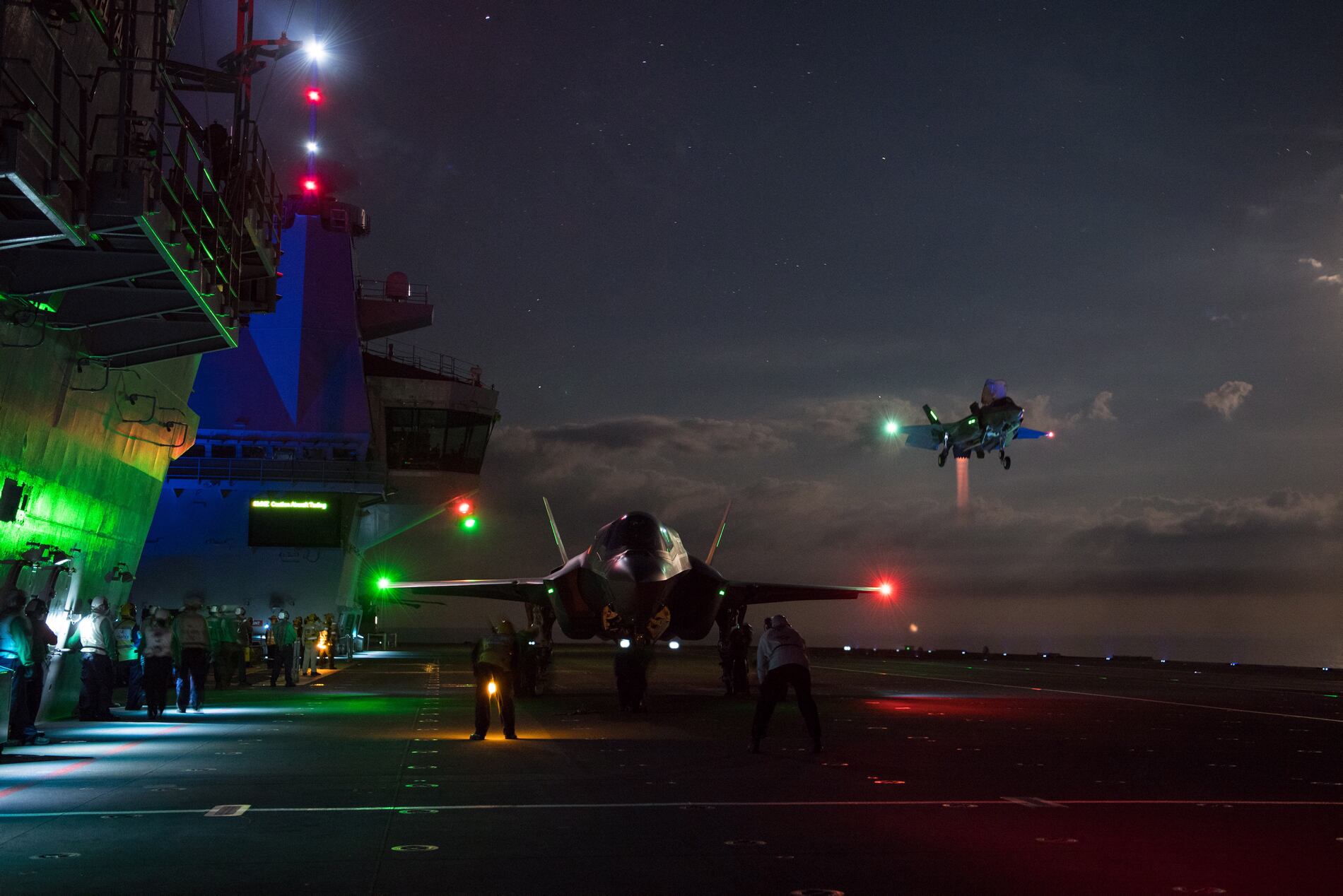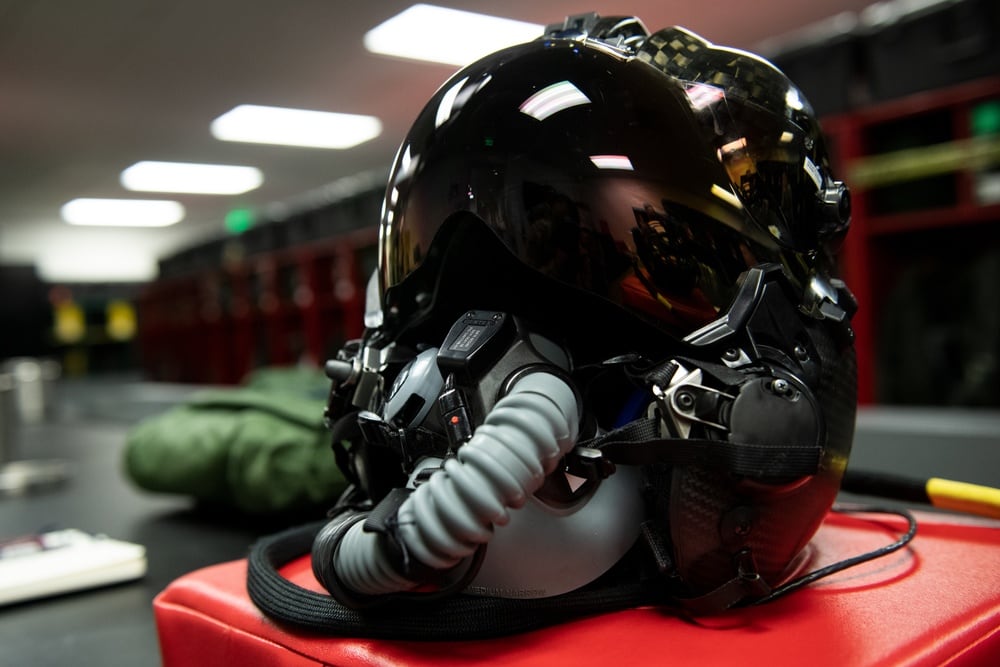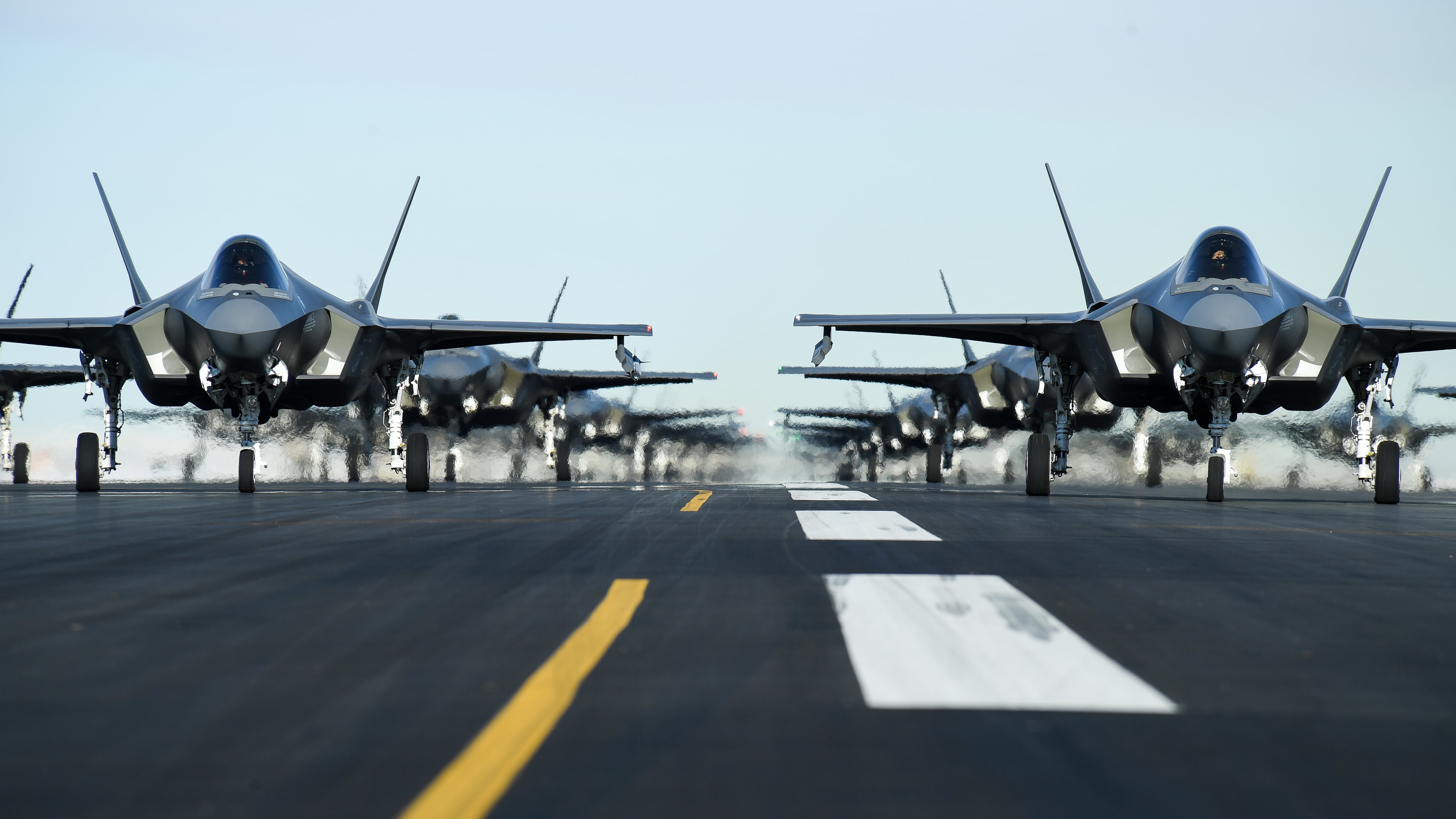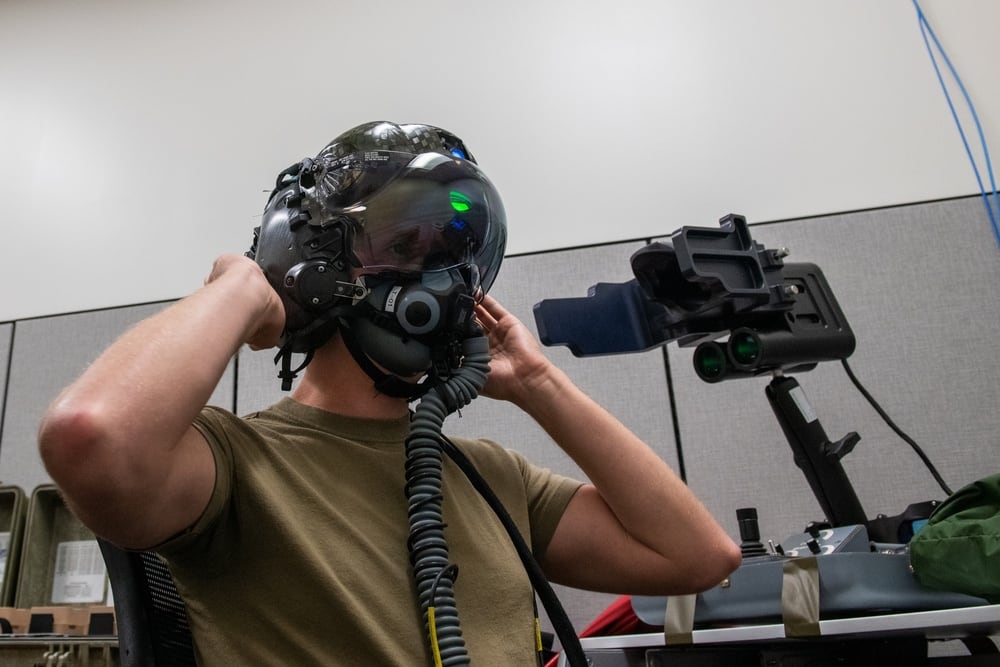An F-35A instructor pilot’s nighttime refueling lesson early this year turned into a midair nightmare when he struggled to see nearby jets and grew disoriented from his helmet’s so-called “green glow.”
The problem led to an investigation that found the $400,000 helmet was poorly designed or unsuitable for missions in the Air Force’s premier fighter jet, according to a safety report obtained by Air Force Times.
Despite the risks on display that night, the Air Force hasn’t yet joined the Navy and Marine Corps in updating the helmets for its version of the F-35 Lightning II. If it does, the earliest the new gear could arrive is in 2023.
RELATED

Aviators first reported green glow was an issue on the F-35 in 2012. It remains a problem for both the Generation III and III Light helmets, made by Collins Aerospace, Air Force spokesperson Rose Riley said.
Instead of showing a night vision camera’s feed on a screen in the cockpit, helmet designers opted to stream video from a built-in camera onto a display in the headgear. The design led to a green glow effect that can obscure a pilot’s vision while flying in the dark.
“Eielson pilots have the newest F-35 helmet options available for combat units,” Riley said. “[The military] continues to pursue an improved Gen III helmet or the introduction of a new Gen IV helmet to provide the warfighter with the best equipment available.”
On the night of Jan. 6, an active duty fighter pilot from Eielson Air Force Base, Alaska, set off to supervise an Air National Guardsman who was practicing refueling maneuvers in the dark.
The instructor belonged to Eielson’s 356th Fighter Squadron, and the Guardsman to its 168th Wing. Both were unnamed in the report submitted through the Airman Safety Action Program, which allows troops to submit anonymous feedback on incidents from misplaced gear to near-crashes and hypoxia.
Winter weather over southeast Alaska was “uneventful” that evening, the report said, and the pair of fighters approached the KC-135R tanker without issue.

The instructor couldn’t see the tanker well as they drew closer. The KC-135 crew turned up their lights so the F-35 teacher could demonstrate how to smoothly take on gas before settling at the tanker’s right wing to watch the student refuel.
“The [student] pilot struggled to maintain a good contact position over the next five minutes,” the report said. “While the [instructor] was focused on assisting the [student], he started to struggle to identify the observation positions.”
The instructor pilot tilted his head up and peered under the green glow to get a better view of the other airman’s problem. A few minutes later, he got the “leans” — an illusion where a pilot tilts under the impression that their plane is not level — only to lose sight of the tanker to the left.
He escaped a possible collision by maxing out the afterburner to speed away from the other planes on autopilot until he recovered.
The instructor felt back to normal after about 30 seconds but stayed on autopilot for several minutes. He wrapped up the sortie and headed back to Eielson, where he was cleared by a flight doctor.
Air Force investigators later concluded that faulty policies and processes, inadequate training and subpar equipment contributed to the pilot’s dangerous confusion in the cockpit. The airman was wearing a Gen III helmet at the time.
F-35 helmets glow too brightly for air-to-air refueling, even when set on the lowest level, investigators said. They suggested further dimming the green lighting so pilots wouldn’t have to peer around the glow to see.
They also recommended revising the air refueling rules so that tankers put on their high beams while another aircraft is approaching, instead of relying on the incoming pilot to ask for better lighting.
Riley did not answer how often Air Force pilots deal with green glow in the service’s 302 F-35As.
The F-35 Joint Program Office, which manages the three versions of the airframe across the Air Force, Navy and Marine Corps, has tried to introduce fixes for the problem. Faulty helmets need different night vision cameras to completely resolve the issue, but the military hasn’t gotten full funding for the technology, Riley said.
However, an upgrade program is already underway. The Air Force isn’t part of it.
Night vision in Collins helmets uses two kinds of technologies, similar to those found in household televisions. One is a liquid crystal display (LCD), which shines a backlight to brighten its images. The other is known as an organic light-emitting diode (OLED) display, in which pixels individually light up and turn off for a better-controlled image.
RELATED

Gen III and III Light LCD helmets make up the vast majority of F-35 helmets delivered so far.
As of early November, about 1,000 Gen III and III Light helmets with a liquid crystal display had been delivered to the U.S. Air Force, Navy and Marine Corps. Another 400 or so went to foreign military customers.
Other helmets that aim to fix green glow are on their way — but none to the Air Force.
After the Navy and Marine Corps began fighting the light while trying to land on aircraft carriers at night, the F-35 program bought 124 OLED helmets that promised to end the problem for the two services.
The Air Force did not prioritize a need for OLED night vision, and so was left out of the purchase, Joint Program Office spokesperson Laura Seal said.
Sixty-two of the improved helmets had arrived to the Department of the Navy by February 2020, with the other half slated for delivery in May 2022.
The initiative hit another hurdle when the first helmets came in: One component didn’t last as long as expected, causing Collins to partially redesign the OLED display, company spokesperson Megan Strader said.
Collins resumed work on the improved helmets in October under a $20.7 million contract awarded to jet manufacturer Lockheed Martin. The company expects OLED will come standard on F-35 helmets starting in 2023.
“Upon successful testing of this mature OLED design, the JPO will buy production and retrofit OLED capability firstly for the USN and USMC F-35C pilots, and if required, to the wider F-35 community,” Seal said.
Joint Strike Fighter program officials are in talks with the Air Force and other F-35 users to see whether they should also get a new set of gear. In the meantime, airmen will continue flying with the same helmets, green glow and all.
“The F-35 Systems Management Office is in constant pursuit of ensuring the warfighters’ requirements are met through a disciplined approach to balance risk, capability and affordability,” Riley said.
Rachel Cohen is the editor of Air Force Times. She joined the publication as its senior reporter in March 2021. Her work has appeared in the Washington Post, the Frederick News-Post (Md.), Air and Space Forces Magazine, Inside Defense, Inside Health Policy and elsewhere.





